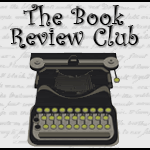 |
We’re all readers here, right? How do you usually pick that next book to read? If we’re in a brick-and-mortar store, we look at the cover, we note the author, read that all-so-important description, and then maybe a few pages of chapter one. If we’re online, all of that is still present, but we get the added bonus of that preview. We can actually read the entire preview before we make that purchase decision. Oh, and then there are the reviews—from professionals as well as amateurs.
In every step of this process, we constantly build on what we think the book is going to be about, especially if you’ve got a good book description.
When’s the last time you started a book without any of that? Okay, you can throw in the author, title, and book cover because you actually have to pick it up or download it, but nothing else.
For me, three out of every four months, I get to do that.
I’m in a four-guy science fiction book club that has lasted now over twelve years. We take turns picking the book, we read it during the month, and then gather on the first Tuesday of the next month to discuss. It is at the meeting where we offer our grade and then the Picker gets to explain why he picked the book. When it’s my turn to assign a book, I’ve already gone through every step mentioned above.
Sometime in 2021 (or maybe 2020), I started going into the books picked by the other guys cold. Nearly every selection is on audio so the day the new book is picked, I download it (via Libby and my local library or Audible) and start playing. In this manner, I experience pure story. Sure, I’ve seen the cover and read the title and author, but that’s it.
I love it. With so much of our lives dictated by a myriad of decisions—including the books we read—it’s great to have that choice offload three out of every four months.
What I really love is when there’s a book by an author I don’t know. It happened with this month’s selection: Dead Silence by S. A. Barnes. Knew nothing about it and it is the book to beat for 2023. It’s a rare trick when a book’s spooky nature and a narrator’s excellent performance literally gives me chills and compels me to turn around on my nightly walks to make sure I’m alone.
I find having a book picked for me quite fun. It also happens every month with my cozy mystery subscription through Houston’s Murder by the Book. I do read those book descriptions because I think they are among the best, pun-filled descriptions out there.
With the monthly SF book and the cozy book already picked for me, it frees me up to make my own selection with more care. After all, even with audiobooks, there is only so many story hours in a month.
Note: since there are so many hours in a month to read or listen to stories, if the book is bad or isn’t capturing me, I pull the rip cord and stop. I do not feel compelled to finish. The other guys in the club used to question me and my response remained constant: Life’s too short to read bad books or books you don’t enjoy. Thus, when I give it a grade—officially an I for Incomplete—I’ll explain why the book failed me.
So, have you ever read a book without even reading the book description or reviews or anything? You should try it sometime. Get into a book club, but if that’s not an option, have a spouse or friend select your next book and just read.
Photo: Mo Eid via Pexels.com










